Results 9,941 to 9,950 of 12096
Thread: Anandtech News
-
10-09-19, 03:31 PM #9941
Anandtech: G.Skill Launches 32 GB DDR4 Modules, 256 GB Kits: Up to DDR4-4000
G.Skill has now rolled out its 32 GB unbuffered DDR4 modules in dual-channel and quad-channel memory kits. The modules are offered with data transfer rates from 2666 MT/s to 4000 MT/s and various modules are compatible with AMD’s Ryzen 3000/X570 as well as Intel’s X299/Z390 platforms.
Based on pre-binned 16 Gb memory chips and proprietary PCBs, G.Skill’s hardware boils down to sets of 32 GB DDR4 unbuffered DIMMs. Lower-end modules are set to be available as single pieces as they can be used by PC makers that need to lower their BOM cost, whereas higher-end parts will be offered as dual-channel and quad-channel kits for high-end desktops and workstations. The UDIMMs feature an XMP 2.0 SPD for setting speeds beyond JEDEC.
As there are several platforms used by enthusiasts today, G.Skill will offer two families of products:G.Skill's 32 GB Trident Z UDIMMs and Kits Speed CL Timing Voltage Kit
Config.Kit
CapacityDDR4-2666 CL18 18-18-43 1.2 V 1×32 GB 32 GB 2×32 GB 64 GB 3×32 GB 128 GB 4×32 GB 256 GB CL19 19-19-43 1×32 GB 32 GB 2×32 GB 64 GB 4×32 GB 128 GB 8×32 GB 256 GB DDR4-3200 CL16 18-18-38 1.35 V 1×32 GB 32 GB 2×32 GB 64 GB 4×32 GB 128 GB 8×32 GB 256 GB DDR4-3600 CL18 25-25-45 1.4 V 2×32 GB 32 GB 4×32 GB 64 GB DDR4-3800 CL18 22-22-42 1.35 V 2×32 GB 64 GB DDR4-4000 CL18 25-25-45 1.4 V 4×32 GB 128 GB
- Trident Z Neo for AMD Ryzen 3000/X570 platforms
- rident Z Royal for Intel platforms.
For AMD Ryzen 3000-based PCs, the highest-performing kits will be 64 GB DDR4-3800 CL18 as well as 128 GB DDR4-3600 CL18 offerings. For the Intel platform, the highest end kits will be 128 GB DDR4-4000 CL18 as well as 256 GB DDR4-3200 CL16. Validation for AMD is done using the MSI MEG X570 Godlike motherboard, whereas validation for Intel is made on the ASUS ROG Rampage VI Extreme Encore motherboard. Other motherboards will be validated over time, and likely up to the motherboard manufacturers in their own QVL.
All enthusiast-class 32 GB unbuffered DIMMs from G.Skill will be equipped with aluminum heat spreaders with an RGB lightbar with multiple lighting zones. The Trident Z Royal will come with polished silver or gold heat spreaders as well as a crystalline RGB lightbar, whereas the Trident Z Neo will use matte heat spreaders and an RGB lightbar.
One thing to keep in mind about 32 GB UDIMMs is that they may require a BIOS update as not all motherboards support them out-of-box.
G.Skill will start sales of its 32 GB UDIMMs as well as dual-channel and quad-channel kits that use them later this quarter. Pricing will depend on capacity as well as rated performance levels, but since these products are designed for high-end PCs, they will be priced accordingly.
Related Reading- 32 GB Unbuffered DIMMs Listed from Seven Brands: DDR4-2400 to DDR4-3000
- Corsair Unveils 32 GB Vengeance LPX DDR4 DIMMs, 64 GB & 128 GB Dual-Channel Kits
- Samsung 32GB DDR4-2666 Non-ECC Memory at Retail: $168
- ADATA Demonstrates 32 GB DDR4 Modules, Built on Micron 16 Gb
- Crucial 32 GB DDR4 Modules Found in an ASRock System
Source: G.Skill
More...
-
10-10-19, 09:33 AM #9942
Anandtech: The Oppo Reno Ace: 90 Hz AMOLED 6.5-inch HDR10+ with 65W Charging
Today in China, top 5 smartphone company Oppo launched its latest flagship smartphone. The new Oppo Reno Ace goes above and beyond the Oppo Reno launched earlier in the year by jamming in some quite impressive specifications into a device that retails around USD $420.
More...
-
10-10-19, 09:33 AM #9943
Anandtech: Intel Releases Advisory: Update X299 for Cascade-X, and Lose Kaby-X Suppor
Motherboard firmware is a fickle thing: in order to support as many CPUs as possible, especially in the multi-core and turbo era, each processor has to have its own entry in the support table in the BIOS. With luck, some processor variants can share entries, but ultimately the more processors a platform supports, the larger the BIOS firmware tends to be. As we have moved from basic BIOS implementations to complex UEFI interfaces, the amount of free space inside BIOS firmware has reduced drastically.
As a result, in recent generations, we’re seeing motherboards drop support for certain ranges of processors. Recently, a range of AMD AM4 motherboards have dropped support for the earliest A-series processors that were supported on the platform, mostly because these parts were not widely used at the end of the day. Now, Intel is doing the same thing: for users who invested in the X299 platform, in order to support the new Cascade Lake-X processors, that same BIOS version is unlikely so support the quad-core Kaby Lake-X processors.
More...
-
10-10-19, 10:35 AM #9944
Anandtech: HP Unveils Chomebooks for Enterprise: AMD and Intel
HP has introduced its first business-oriented Chromebooks for Enterprise mobile PCs that support advanced security, management, and deployment features. The lineup consists of two machines featuring different configurations: Intel-based Chromebook Enterprise x360 14E G1 convertibles with 8th Generation processors, as well as AMD-powered Chromebook Enterprise 14A G5 laptops.
HP’s Chromebook Enterprise 14A G5: A Cheap Business Machine
HP’s entry-level Chrome OS-based machine for business users is the Chromebook Enterprise 14A G5 that is equipped with a 14-inch HD or Full-HD display and is based on AMD’s dual-core A4-9120C with Radeon R4 graphics or dual-core A6-9220C with Radeon R5 graphics. The system comes equipped with 8 GB of DDR4-1866 RAM as well as an eMMC 5.0 drive featuring capacity from 16 to 64 GB. The machine is 1.83 cm thick and weighs 1.57 kilograms, which is comparable to other 14-inch laptops.
Other features of the notebook include Wi-Fi 5, Bluetooth 4.2, two USB 3.1 Gen 1 Type-A ports, two USB 3.1 Gen 1 Type-C connectors (with Power Delivery and DisplayPort support), a microSD card reader, a 3.5-mm audio connector for headsets, a 720p camera, stereo speakers, a microphone array, a spill resistant keyboard, a touchpad, and a 47.36 Wh battery that can last for up to 9 hours, according to HP.
Since we are dealing with a business-class machine, it comes with Google’s H1 security chip that enable security features supported (or to be supported) by Chrome OS, including verified boot, battery cutoff, and guaranteed reset.
HP’s Chromebook Enterprise x360 14E G1: A More Advanced Business Machine
Moving on to the Chromebook Enterprise x360 14E G1, which is a more advanced and presumably more expensive Chrome OS-powered laptop from HP. Being a premium convertible PC, the notebooks comes in a metallic chassis with a 14-inch Full-HD IPS-class monitor with thin side bezels as well as a 360° hinge that flips and folds the laptop into notebook, stand, tent, and tablet modes. The hybrid machine weighs 1.61 kilograms and features a 1.6 cm z-height.
Offering considerably higher performance than its counterparts mentioned above, the Chromebook Enterprise x360 14E G1 machines pack Intel’s 8th Generation Core (also Pentium or Celeron) processors with up to four cores as well as Intel UHD Graphics 610/620 that are accompanied by up to 16 GB of DDR4-2133 RAM as well as an eMMC 5.0 storage solution of up to 64 GB capacity. When it comes to connectivity, the PC features Wi-Fi 5, Bluetooth 4.2, one USB 3.1 Gen 1 Type-A port, two USB 3.1 Gen 2 Type-C connectors with DisplayPort as well as power delivery for docking, a microSD card reader, and a 3.5-mm connector for headsets.
Being aimed at users that demand something better than average, HP’s Chromebook Enterprise x360 14E G1 computers feature B&O-badged speakers as well as a 60.9 Wh battery that can last for up to 13 hours. The notebook also has a 720p webcam, a microphone array, Google's H1, and other essentials.
Sales & Availability
HP will start sales of its Chromebook Enterprise x360 14E G1 convertibles and Chromebook Enterprise 14A G5 laptops later this month. Pricing is unknown.
Related Reading:
- Dell’s New Latitude 5300 2-in-1 and Latitude 5400: Chromebooks for Enterprise
- The ASUS Chromebook Flip C434: A Convertible Chromebook with Premium Features
- HP Unveils Chromebook x2: A 12.3-inch 2400x1600 2-in-1 with Intel Core-Y
- Acer Announces New Chromebooks And Chromebox Devices
- Google Launches Pixelbook: 12.3” LCD, Kaby Lake, 16 GB RAM, 512 GB SSD, Assistant, Stylus
- ASUS Launches the 360º Chromebook Flip C213: 11.6-inch Apollo Lake, Starting $349
Source: HP
More...
-
10-10-19, 10:35 AM #9945
Anandtech: Diving into Intel’s Regional Focus: How is the UK different to the US? Wha
In this industry, it’s very easy to fall into a lull that the North American market is blueprint from which every other commercial market is drawn up. In reality, each region and sub-region has its own foibles, from the types of customers in play, budgets customers can spend, and the requirements therein that might be unique to that region. Of course, within Europe there are several sizeable markets that aren’t like the North American market at all, and this year in the UK a lot of talk has been about how Brexit will affect business, supply, and revenue.
This week Intel UK held an open house for media and partners to demonstrate the latest range of Intel devices, mostly derived from Ice Lake notebooks, Project Athena devices, gaming laptops, and super desktop rigs that are sold in the market. Intel also paired that up with a number of presentations going over Intel’s strategy and how it plays out to the local consumer base. From my perspective, given that I’ve been to over a dozen equivalent events driven by the US PR teams, the presentations at this event approached a number of market issues in a very uniquely British way.
Based on my questions after the first few talks, the local PR team offered me some 1-on-1 interview time with one of the keynote speakers, Jeff Kilford. Jeff, having worked at Intel for 25 years, is a key spokesman on local client strategy. His background includes being the Director of Intel’s IT to managing the whole of the Client Computing Group in the UK. His work involves a lot of discussions with Intel’s place in the UK as it relates to consumers and commercial use cases, as well as retailers, OEMs, and local distribution and supply chain.
More...
-
10-10-19, 12:37 PM #9946
Anandtech: TRX40 Chipset For Upcoming AMD Ryzen Threadripper Listed
In what is being put down to an inadvertent leak by MSI, it could be that the currently unannounced chipset for AMD's new 3rd Gen Ryzen Threadripper series processors has been officially mentioned (not withstanding the unconfirmed leaks from various sources). With the new AMD Ryzen Threadripper third generation set to hit the shelves in November, a lot of discussion is circulating about potential motherboard chipsets names and monikers. On one end we're expecting compatibility with current X399 motherboards, and yet on the other new chipsets are expected to hit the market.
On MSI's promotional pages, in which users can redeem rewards for purchasing specific and eligible MSI products, an unknown motherboard was revealed which piqued interest among users. Under MSI's $25 Steam Gift Card promotion, an unreleased model named Creator TRX40 was listed which at present, hasn't been announced by MSI or AMD. We know that the Creator series is MSI's new content creator focused range with our announcement that MSI is refreshing some X299 models, notably the MSI Creator X299.
Little is known about what AMD intends to call the chipset for the new HEDT 3rd generation Threadripper processors, but it has been speculated that it might be called TRX80. With the accidental leak on the MSI website which has since been removed with much haste, it adds further speculation to the fire that AMD might release two chipsets instead of one. We have no confirmation as to what each of these chipset names mean, and some users have theorised that it could relate to consumer/commercial platforms or the memory channel count.
We know that AMD's new 3rd Gen Ryzen Threadripper series will start with an entry-level model with 24 cores, with a 64-core part speculated to be in the pipeline. AMD has kept its cards closely to its chest as we've seen from previous product launches, but it remains an exciting time for users looking to build a single-socket system that features high core and thread count based on Ryzen's Zen2 7nm architecture. We expect more information to become available closer to the next-gen Ryzen Threadripper series is set to launch in November.
Related Reading- AMD: Next Gen Threadripper and Ryzen 9 3950X, Coming November
- Spotted at Computex: A Ryzen PC in a Threadripper RETAIL box
- AMD Reiterates 7nm Roadmap: Navi, Matisse, & Rome to Launch in Q3
- AMD Brings Ryzen 9 3900 and Ryzen 5 3500X to Life
- AMD Announces Ryzen Pro 3000 Series CPUs For Q4
More...
-
10-10-19, 05:52 PM #9947
Anandtech: Intel to Discontinue Nearly All Desktop Kaby Lake CPUs
Intel has announced End-of-Life plan for most of its desktop Kaby Lake and remaining Skylake processors. The boxed and tray versions of the chips will be available for interested parties for one more year and then will become history. The move will enable Intel to cut the number of product SKUs it offers to partners and reduce pressure on its factory network, which will help to increase supply of newer products made using various versions of Intel’s 14 nm process technology.
Introduced early in 2017, Intel’s desktop 7th Generation Core processors (Kaby Lake) have been around for nearly three years now. The CPUs certainly served their purpose, but it is time for them to go and Intel recommends its partners to place their final orders on these products by April 24, 2020. The final shipments will be made by October 9, 2020. Some of Intel’s Kaby Lake and Skylake products will be moved to Internet of Things (IoT) status and will be available for a little longer to IoT customers and probably some PC makers as there are still previous-generation motherboards on the market that need to be sold.
Intel’s desktop 6th Generation Core CPUs were launched in 2016 and most of them have been in EOL status for a while. This week, Intel said it would stop taking orders on the remaining desktop Skylake products on April 24, 2020, and will cease their shipments by October 9, 2020.Intel Kaby Lake S SKUs Status Last Shipment Date
for EOLed CPUsTray Boxed Core i7-7700K EOL EOL October 9, 2020 Core i7-7700 IoT EOL October 9, 2020 Core i7-7700T IoT EOL October 9, 2020 Core i5-7600K EOL EOL October 9, 2020 Core i5-7600 EOL EOL October 9, 2020 Core i5-7600T EOL EOL October 9, 2020 Core i5-7500 IoT EOL October 9, 2020 Core i5-7500T IoT EOL October 9, 2020 Core i5-7400 EOL EOL October 9, 2020 Core i5-7400T EOL EOL October 9, 2020 Core i3-7350K EOL EOL October 9, 2020 Core i3-7320 EOL EOL October 9, 2020 Core i3-7300 EOL EOL October 9, 2020 Core i3-7300T EOL EOL October 9, 2020 Core i3-7100 EOL EOL October 9, 2020 Core i3-7100T EOL EOL October 9, 2020 Pentium G4620 EOL EOL October 9, 2020 Pentium G4600 EOL EOL October 9, 2020 Pentium G4560 EOL EOL October 9, 2020 Pentium G4560T EOL EOL October 9, 2020 Celeron G3950 EOL EOL October 9, 2020 Celeron G3930 EOL EOL October 9, 2020 Celeron G3930E Launched Launched - Celeron G3930T Launched Launched - Celeron G3930TE Launched Launched -
Winding down production of desktop Skylake and Kaby Lake processors in the next few months will free manufacturing capacities for newer Intel products and will enable the company to increase shipments of newer CPUs, such as 8th and 9th Generation Coffee Lake, that are also made using Intel’s 14 nm fabrication technology.Intel Skylake S SKUs Status Last Shipment Date
for EOLed CPUsTray Boxed Core i7-6700K EOL EOL September 7, 2018 Core i7-6700 IoT EOL October 9, 2020 Core i7-6700T EOL EOL March 6, 2020 Core i5-6600K EOL EOL September 7, 2018 Core i5-6600 EOL EOL March 6, 2020 Core i5-6600T EOL EOL March 6, 2020 Core i5-6500 IoT EOL October 9, 2020 Core i5-6500T EOL EOL March 6, 2020 Core i5-6402P EOL EOL September 7, 2018 Core i5-6400 EOL EOL March 6, 2020 Core i5-6400T EOL EOL March 6, 2020 Core i3-6320 EOL EOL March 6, 2020 Core i3-6300 EOL EOL March 6, 2020 Core i3-6300T EOL EOL March 6, 2020 Core i3-6100 EOL EOL March 6, 2020 Core i3-6100T EOL EOL March 6, 2020 Core i3-6098P EOL EOL September 7, 2018 Pentium G4520 EOL EOL March 6, 2020 Pentium G4500 EOL EOL March 6, 2020 Pentium G4500T EOL EOL March 6, 2020 Pentium G4400 EOL EOL March 6, 2020 Pentium G4400T EOL EOL March 6, 2020 Celeron G3920 EOL EOL March 6, 2020 Celeron G3900 EOL EOL March 6, 2020 Celeron G3900T EOL EOL March 6, 2020
Related Reading:
- Intel Publishes Plans to Wind Down Shipments of 7th Gen Core "Skylake-X" HEDT Processors
- Intel Rebrands Kaby Lake Pentiums to Pentium Gold
- New Intel Kaby Lake Core i3 Processors: i3-7340, i3-7320T, i3-7120T, i3-7120
- The Intel Core i3-7350K (60W) Review: Almost a Core i7-2600K
Source: Intel
More...
-
10-10-19, 05:52 PM #9948
Anandtech: New Tools & IP Accelerate Development of 5nm Arm ‘Hercules’ SoCs
Arm, Synopsys, and Samsung Foundry have developed a set of optimized tools and IP that will enable chip designers to build next-generation SoCs based on Arm’s Hercules processor cores on Samsung’s 5LPE (5 nm, Low Power Early) node faster. The three companies expect the tools and IP to be used by designers of SoCs for a wide variety of applications.
The set of Synopsys tools are certified by Samsung Foundry for its 5LPE manufacturing technology, and now includes the Fusion Design Platform as well as QuickStart Implementation Kit that are enabled to optimize power, performance, and area for 5LPE designs. Meanwhile, Arm will provide Artisan Physical IP and POP IP tailored for Samsung’s 5LPE process. The IP packages will enable Arm’s partners to quickly develop 5LPE-optimized SoCs based on the Arm Hercules general-purpose CPU cores.
Samsung Foundry’s 5LPE fabrication process is the company’s 3rd Generation refinement of its 7LPP node that uses more EUV layers and features other improvements. The new technology provides an up to 25% higher ‘logic efficiency’, it also allows chip designers to lower power consumption of their SoCs by 20% (at the same performance and complexity) or improve their performance by 10% (at the same power and complexity). While developers can reuse 7LPP IP on SoCs build for 5LPE while taking advantage of the benefits the latter provides, to extract the maximum value of the new technology, optimized tools and IP are needed.
Considering that Arm’s Hercules are the company’s next-generation advanced CPU cores and 5LPE is a leading-edge process technology, Samsung expects the new tools and IP to be used for SoCs aimed at HPC, automotive, 5G, and AI applications.
Samsung expected to tape out the first 5LPE chips in the second half of 2019 and plans to start volume production using the node in the first half of 2020.
An official statement of Jaehong Park, executive vice president of Foundry Design Platform Development at Samsung Electronics, reads as follows.
"Synopsys' Fusion Design Platform and QuickStart Implementation Kits provide a design-ready solution for next-generation Arm-based processors. This is a great example of how Samsung 5LPE technology can be utilized to give designers a competitive advantage in their high-performance CPU designs. Through our close partnership with Arm and Synopsys, customers will now be able to extract maximum value out of our 5-nanometer processes for design applications targeted at high-performance and low-power markets."Related Reading- Samsung’s 5nm EUV Technology Gets Closer: Tools by Cadence & Synopsys Certified
- Samsung’s Aggressive EUV Plans: 6nm Production in H2, 5nm & 4nm On Track
- Synopsys to Accelerate Samsung’s 7nm Ramp with Yield Explorer Platform
- TSMC’s 5nm EUV Making Progress: PDK, DRM, EDA Tools, 3rd Party IP Ready
Source: Synopsys
More...
-
10-11-19, 10:28 AM #9949
Anandtech: Corsair 16GB DDR4-5000 Vengeance LPX Memory Kit: Built for AMD Ryzen 3000
The high-tech industry loves milestones that are round numbers, be it frequency, number of cores, transistor count or something else. It is not that extra 100 MHz – 200 MHz or a couple of additional CPU cores radically improve performance or user experience these days, but because milestones symbolize an achievement, a new height from where we will go and hit the next ones. Today, the industry has reached a milestone as Corsair introduced the industry’s first commercial DDR4-5000 memory modules. We saw numerous companies 'promote' DDR4-5000 earlier this year at Computex, but none were seriously considering bringing them to retail. Corsair is the first.
Corsair’s dual-channel Vengeance LPX DDR4-5000 (CMK16GX4M2Z5000C18) memory kit comprises two 8 GB unbuffered modules featuring a CL18 26-26-46 latency and a 1.5V voltage. The memory modules use Micron’s cherry-picked memory ICs and use a custom 10-layer PCB from Corsair. The enthusiast grade modules are equipped with aluminum heat spreaders, and are compatible with Corsair’s Vengeance Airflow fan to maximize their cooling.
Corsair says that its Vengeance LPX DDR4-5000 (CMK16GX4M2Z5000C18) memory kit was tuned to hit the desired data transfer rate on high-end platforms based on AMD’s Ryzen 3000 processor and X570 chipset. To be more precise the modules were developed and validated on MSI’s X570 Godlike, MEG X570 Ace, MEG X570 Unify, and Prestige X570 Creation motherboards.
It is unclear how well the modules will work in DDR4-5000 mode when used with other platforms. In any case, keep in mind that modules require 1.5 Volts, which is a whopping 25% increase over standard DDR4 voltage, so they have to be installed in an enthusiast-grade mainboard with a quality and clean memory power supply. In order to reach the DDR4-5000 mode requires some user intervention beyond just setting the XMP profile: to set up the right settings Corsair recommends to check out its Ryzen 3000 memory overclocking guide.
Designed for die-hard performance enthusiasts, overclockers, and benchmarkers, Corsair’s dual-channel 16GB Vengeance LPX DDR4-5000 memory kit is certainly not cheap at all. The company sells it for a sizeable $1,224.99 in the USA ($76.56/GB) and for €1,334.99 in Europe.
Corsair says that there are limited review samples available - if we get one in to test, what would you like to see?
Related Reading- Corsair Reveals Vengeance LPX DDR4-4866 Memory Kit
- GeIL Demonstrates DDR4-5000 Memory Modules: Not for Sale
- G.Skill Announces DDR4-4800 and DDR4-4500 Kits for Z390 Boards
- Corsair Unveils 32 GB Vengeance LPX DDR4 DIMMs, 64 GB & 128 GB Dual-Channel Kits
Source: Corsair
Gallery: Corsair Launches DDR4-5000 Vengeance LPX Memory Kit for AMD Ryzen 3000

More...
-
10-11-19, 10:28 AM #9950
Anandtech: Synopsys Demonstrates CXL and CCIX 1.1 over PCIe 5.0: Next-Gen In Action
Synopsys, one of the leading developers of chip development tools and silicon IP, demonstrated its CXL over PCIe 5.0 as well as CCIX 1.1 over PCIe 5.0 solutions at ArmTechCon 2019. The showcase indicates that the company’s IP is up and running, and is ready to be licensed by interested parties.
CXL and CCIX are chip-to-chip interconnect protocols for connecting processors to various accelerators that maintains memory and cache coherency at low latencies. Both protocols are designed for heterogeneous systems that use traditional CPUs along with accelerators featuring scalar, vector, matrix, and spatial architectures. Both CXL 1.0/1.1 as well as CCIX 1.1 use PCIe Gen 5 PHY stack at 32 GT/s per lane and support different link width natively. Aiming the same market segment and using the same physical interface, the CXL and CCIX protocols have numerous differences both on hardware as well as firmware/software side of things and will therefore compete against each other. Meanwhile, providers of silicon IP are gearing up to support both CXL and CCIX as they have a broad range of customers.
Synopsys recently introduced its 16-lane DesignWare CXL IP solution for SoCs to be made using 16 nm, 10 nm, and 7 nm FinFET process technologies. The package comprises the company’s CXL 1.1-compliant controller (supporting CXL.io, CXL.cache, CXL.mem protocols), silicon-proven PCIe Gen 5 controller, silicon-proven 32 GT/s PHY (allowing >36 dB channel loss across power, voltage, and temperature variations for long reach connections), RAS capabilities, and VC Verification IP.
The company yet has to formally announce availability of its DesignWare CCIX 1.1 IP package that will enable implementation of a CCIX 1.1 over PCIe Gen 5 at 32 GT/s speed, but at ArmTechCon the company demonstrated that the solution is already functional.
Both showcases were carried out using an FPGA as well as special equipment, but not using actual chips, which is not particularly surprising. But even such demonstrations indicate that Synopsys is ready not only with competitive PCIe 5.0 PHY and IP, but also with CXL and CCIX implementations.
Related Reading:
- Gen-Z PHY Specification 1.1 Published: Adds PCIe 5.0, Gen-Z 50G Fabric
- PCI-SIG Finalizes PCIe 5.0 Specification: x16 Slots to Reach 64GB/sec
- USB 3.2 at 20 Gb/s Coming to High-End Desktops This Year
Sources: David Schor/Twitter, Anshel Sag/Twitter, Synopsys
Images by Ryan Smith/AnandTech
More...
Thread Information
Users Browsing this Thread
There are currently 9 users browsing this thread. (0 members and 9 guests)




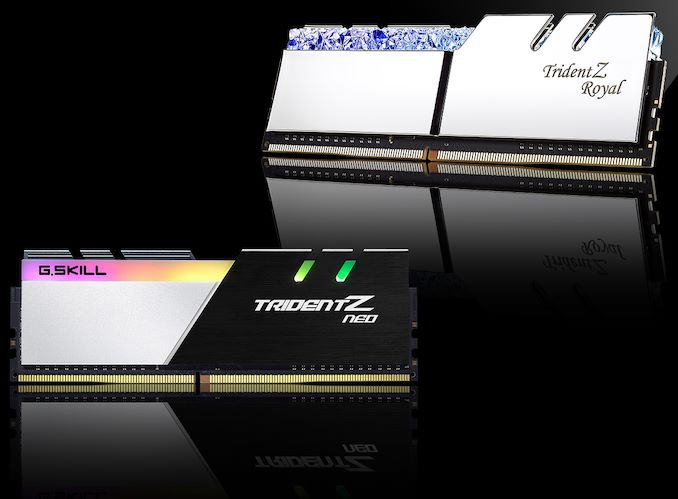

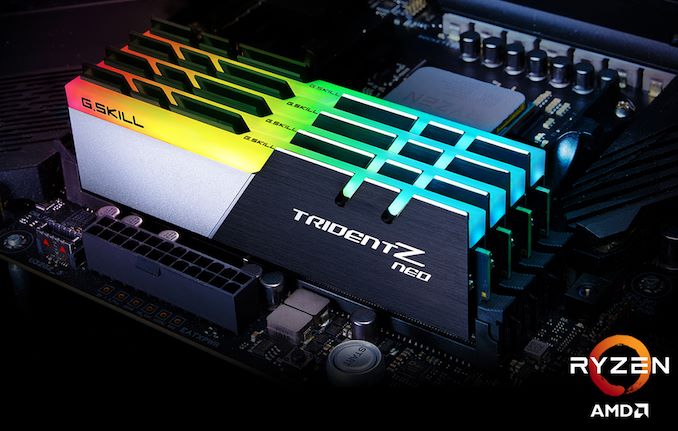
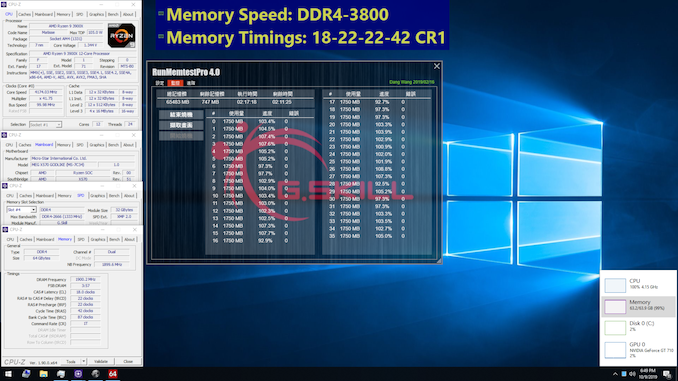
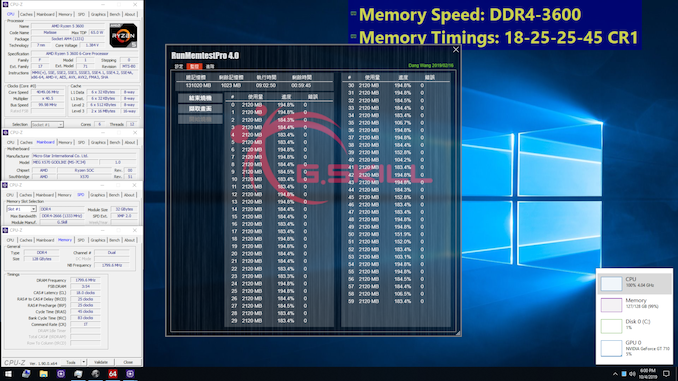
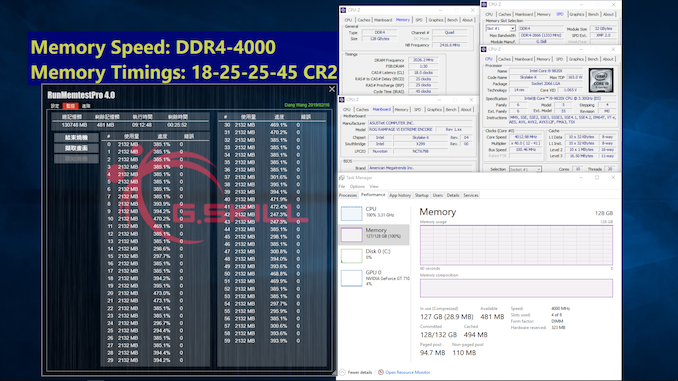
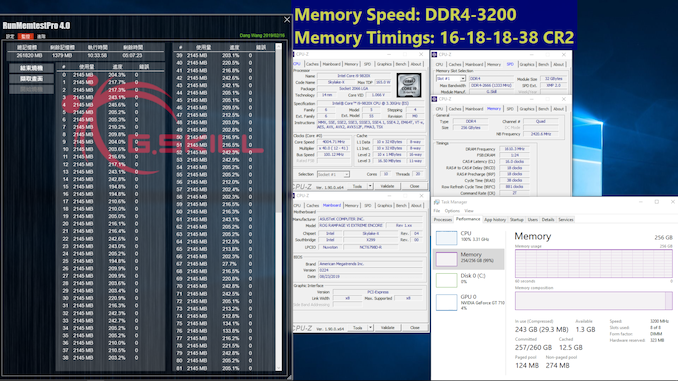

 Quote
Quote_575px.jpg)
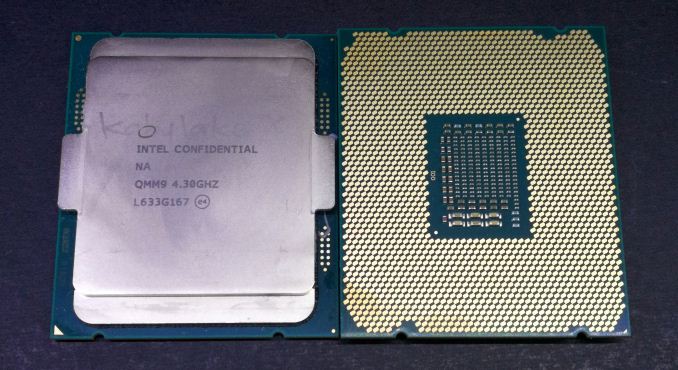
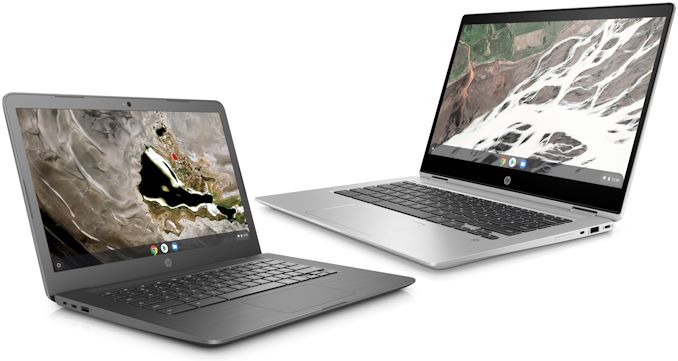
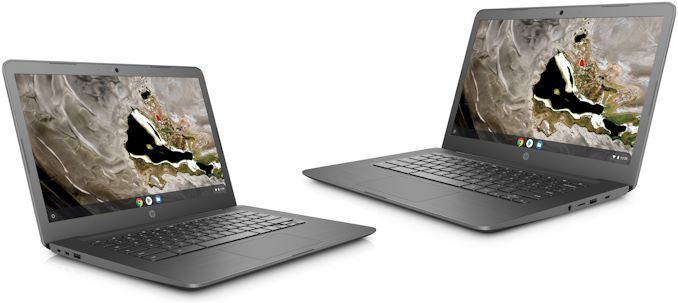
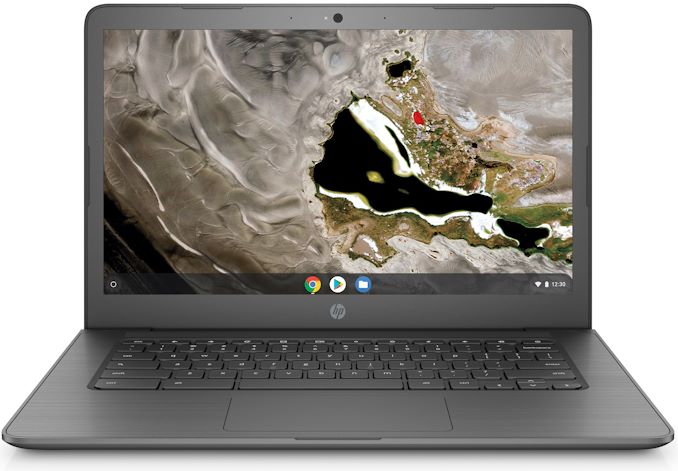
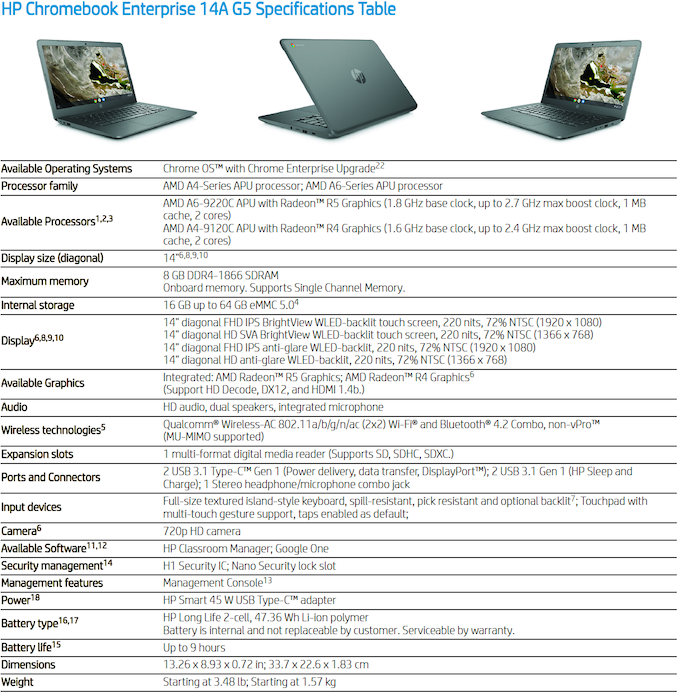
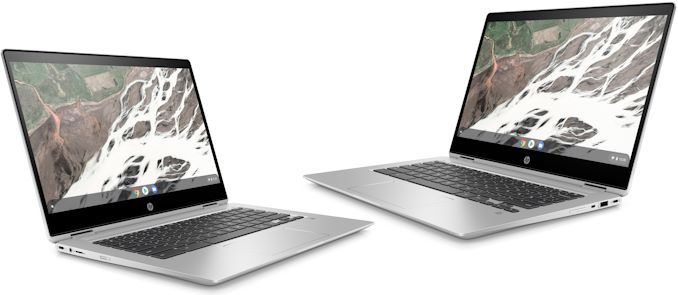

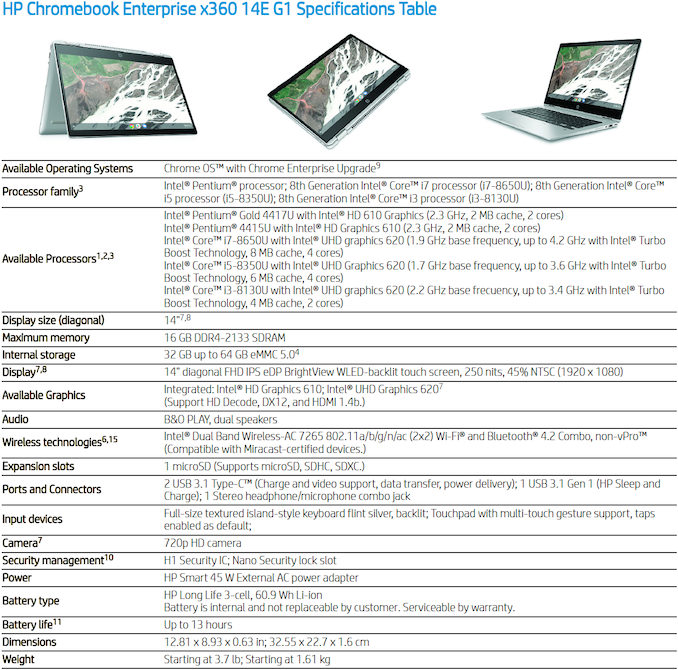


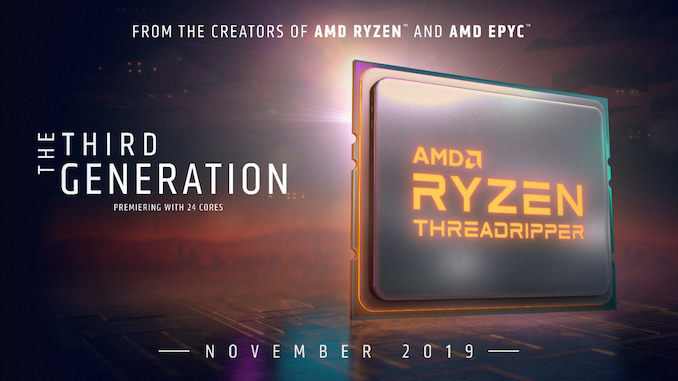


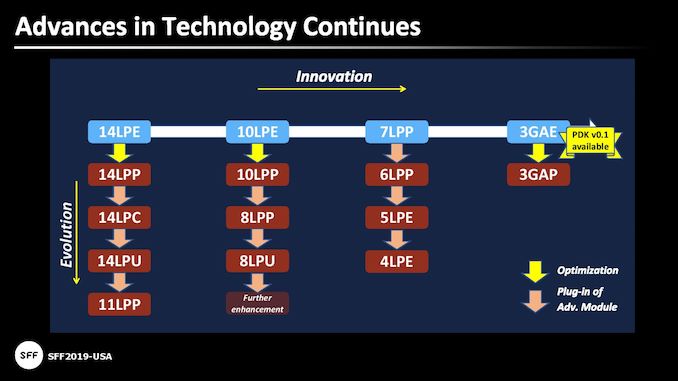
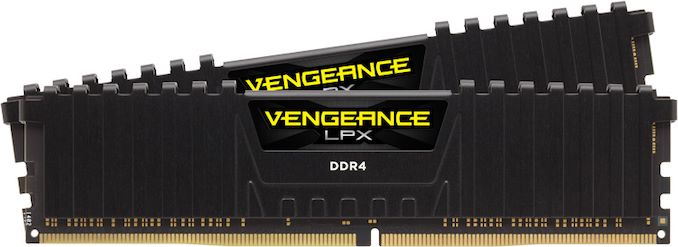
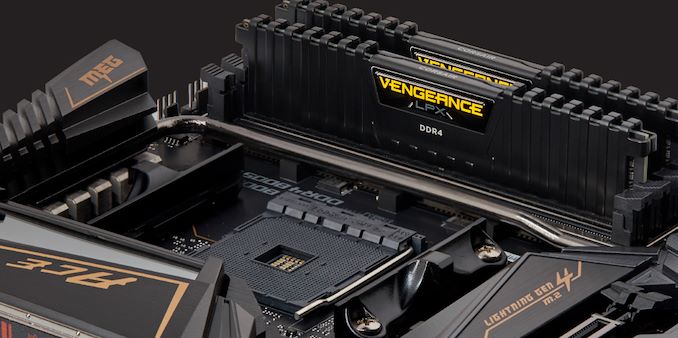
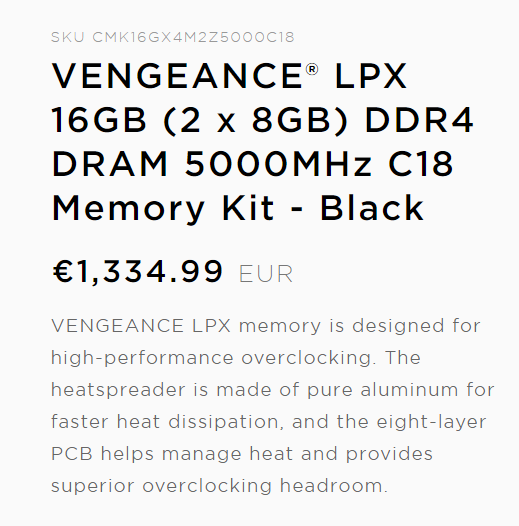
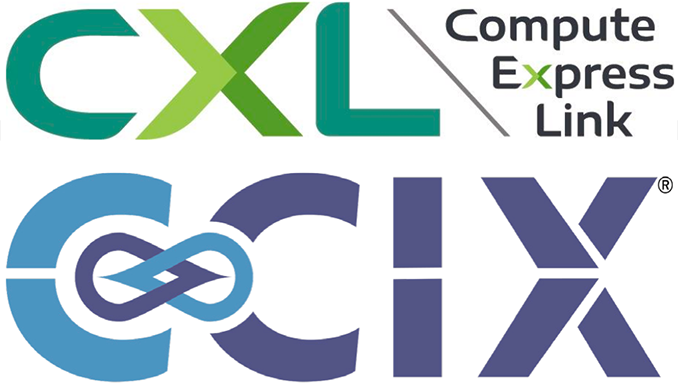
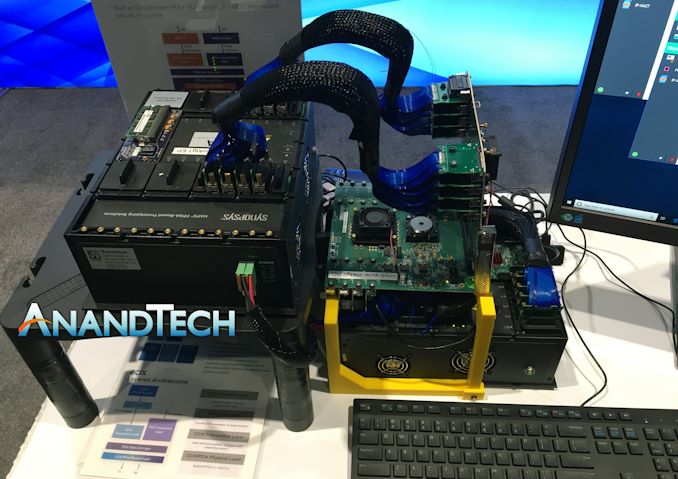
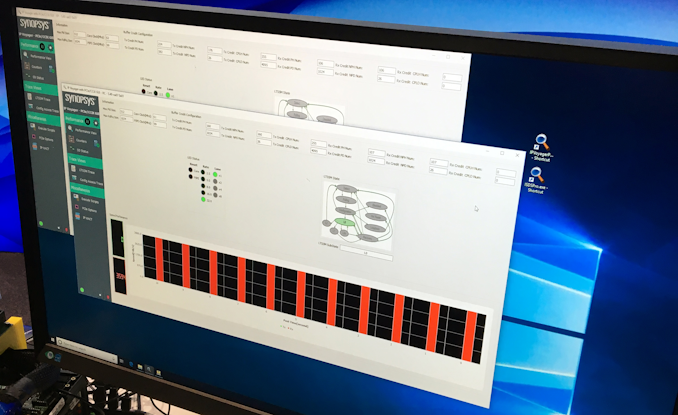
















Bookmarks